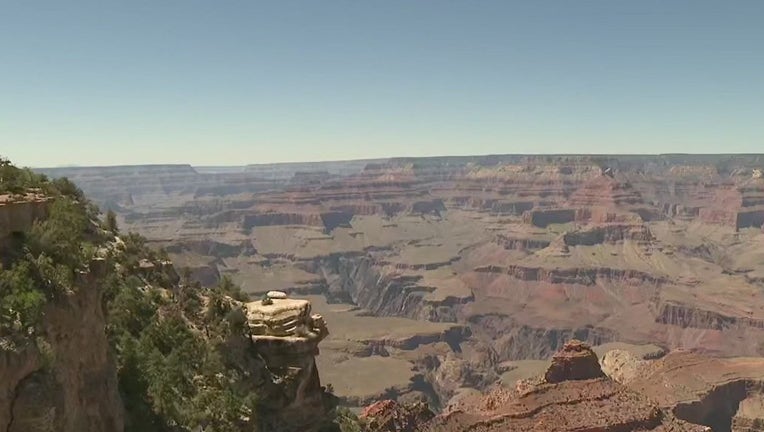Uranium shipments to resume in protected Grand Canyon areas after Navajo Nation and Energy Fuels finalize deal

The Grand Canyon.
NAVAJO NATION - A federal judge rejected a motion from the Arizona State Legislature to remove the National Monument protection on parts of the Grand Canyon on Monday.
It was an effort by the Arizona legislature from former House Speaker Ben Toma and Senate President Warren Petersen to open the area for uranium mining.
The area was designated as protected federal land under the Biden administration.
The Biden team, urged by Arizona Governor Katie Hobbs, argued that the area in the Grand Canyon region contained historic landmarks, sacred sites and items of high scientific significance, which allowed for protection from commercial interest based on the 1906 Antiquities Act.
Featured
Arizona governor urging Biden to designate tribally proposed monument at Grand Canyon
Arizona Gov. Katie Hobbs is urging President Joe Biden to use the Antiquities Act to designate the tribally proposed Baaj Nwaavjo I’tah Kukveni Grand Canyon National Monument.
Mining set to resume, anyways
The judicial ruling, however, is not stopping the restart of the nation's largest uranium producer from ramping up uranium shipments in the protected area.
An agreement reached between Energy Fuels and the Navajo Nation will allow the resumption of mining at Pinyon Plain Mine near the Grand Canyon’s South Rim entrance, according to the Associated Press.
The uranium mine and shipping operations will be happening within the boundaries of the Baaj Nwaavjo I’tah Kukv National Monument designated for federal protection by Biden.
The work was allowed to move forward since Energy Fuels Inc. had valid existing rights before the protections were put in place.
What we know:
The company reached an agreement with the Navajo Nation to set aside longstanding mistrust between the two groups.
It includes a pledge by Energy Fuels to help transport up to 10,000 tons of waste material from the federal government’s past uranium programs in the area.
In addition, it allows the Navajo Nation to monitor and inspect transport trucks coming in and out of the new mine.
There are also provisions for financial compensation, improving safety and protecting the environment, said Stephen B. Etsitty, head of the Navajo Nation Environmental Protection Agency.
READ MORE: The controversy of mining in Arizona has been at the center of legal battles for years
Timeline:
Shipments from the mine are expected to resume in February.
They will be limited to specific routes and times of day, and no shipments will happen when the tribe is participating in cultural celebrations or other public events.
Why you should care:
Between challenges from the local and federal governments, Navajo Nation and the need to keep America's energy demands sustainable, the process of procuring uranium has been just as important as it has been exhausting, says Energy Fuels' President and CEO Mark Chalmers.
"This has understandably caused mistrust toward the U.S. government and energy companies," Chalmers said, adding that he was honored to be able to work with the tribe to address the concerns and ensure transportation will be done safely and respectfully.
The mine will cover only 17 acres (6.8 hectares) and will operate for three to six years, producing at least 2 million pounds (about 907,000 kilograms) of uranium — enough to power the state of Arizona for at least a year with carbon-free electricity, he said.


